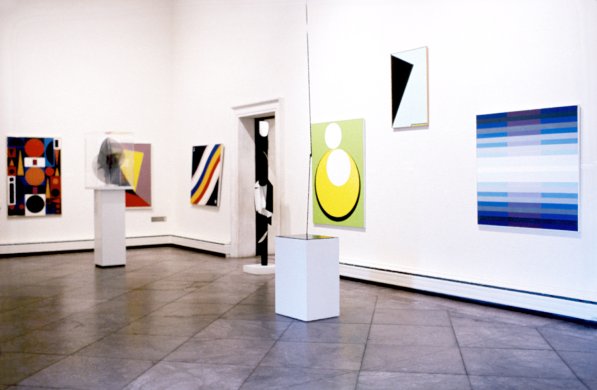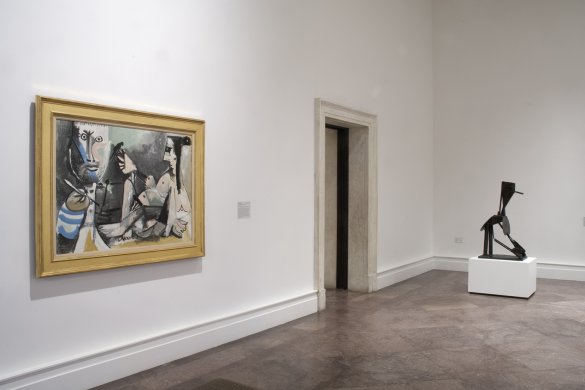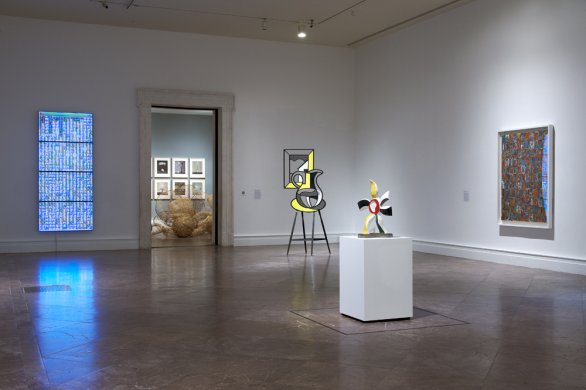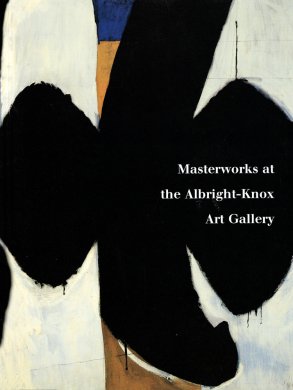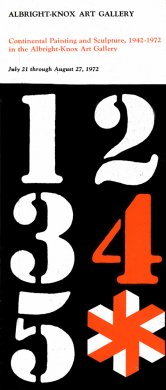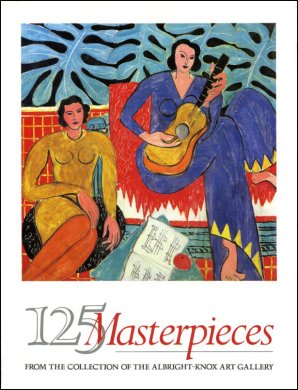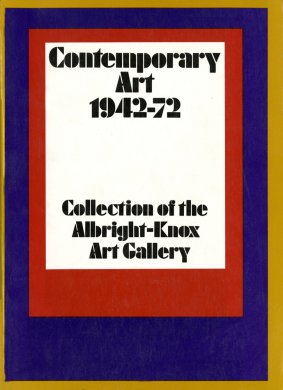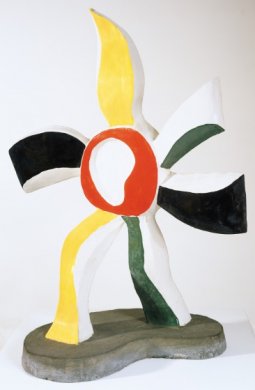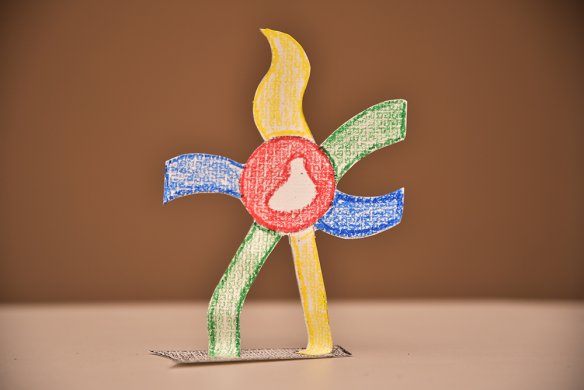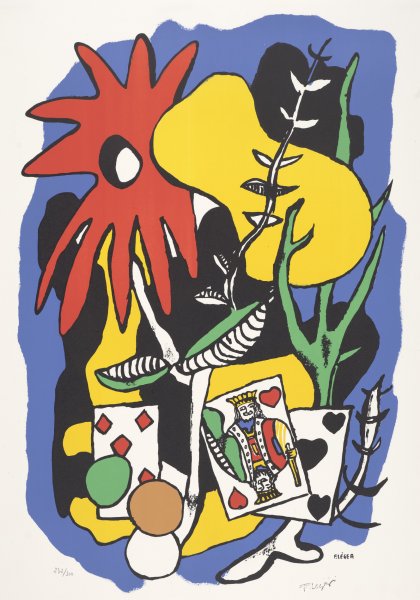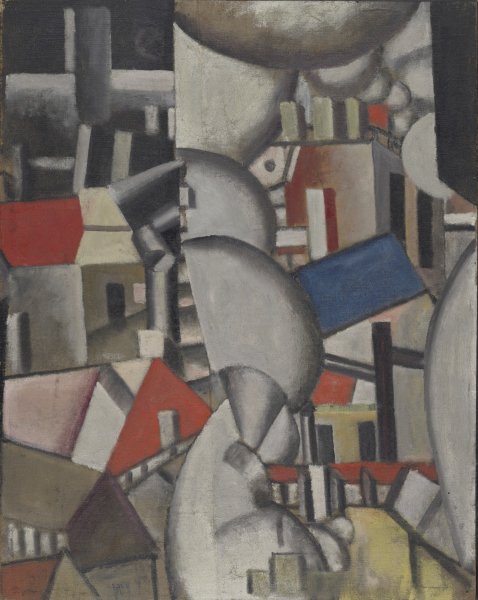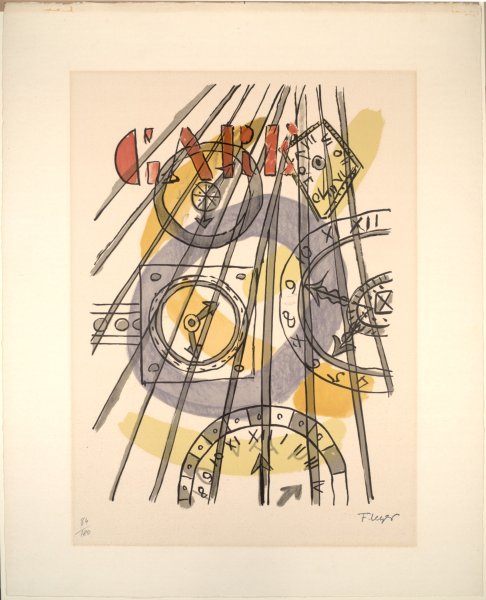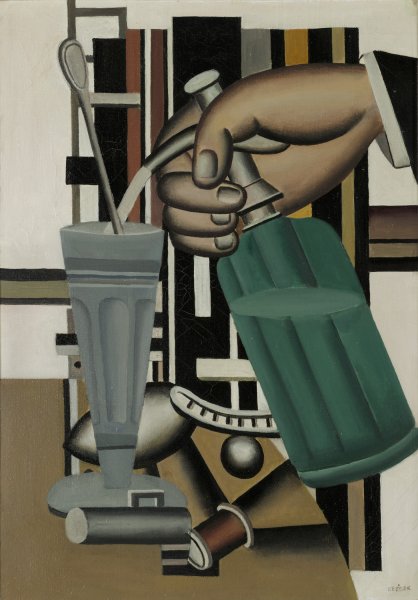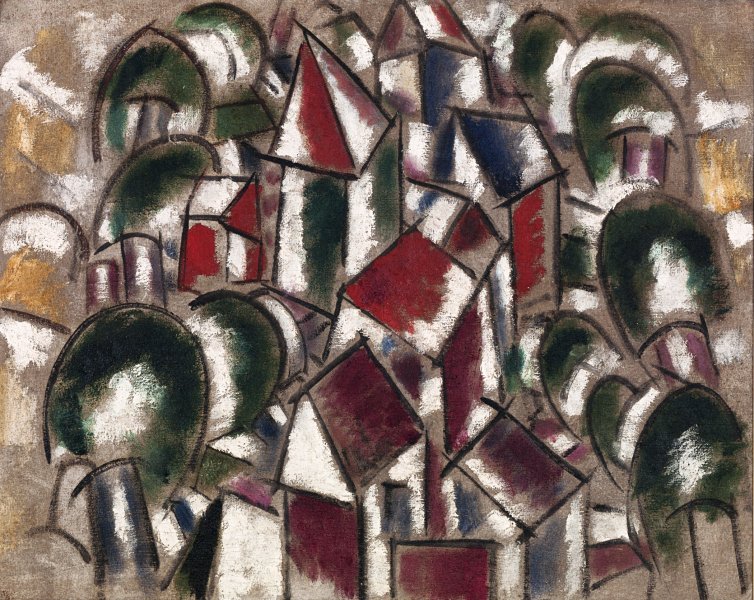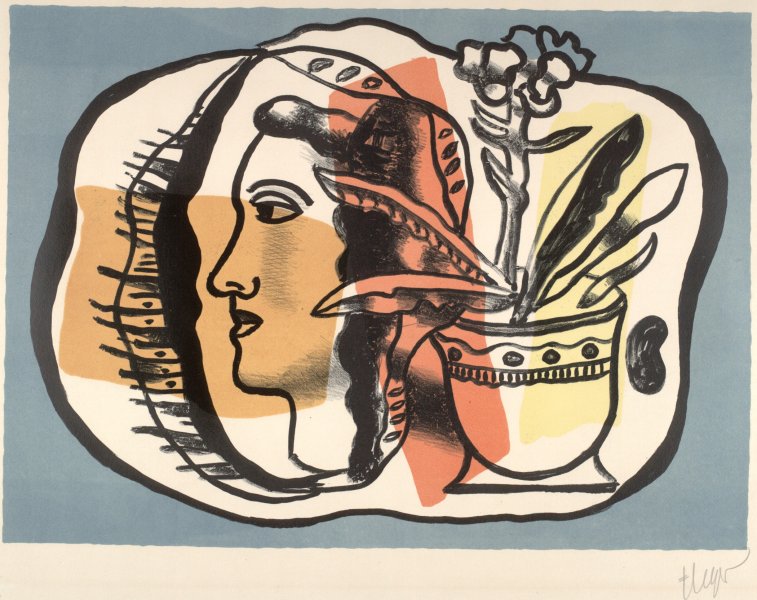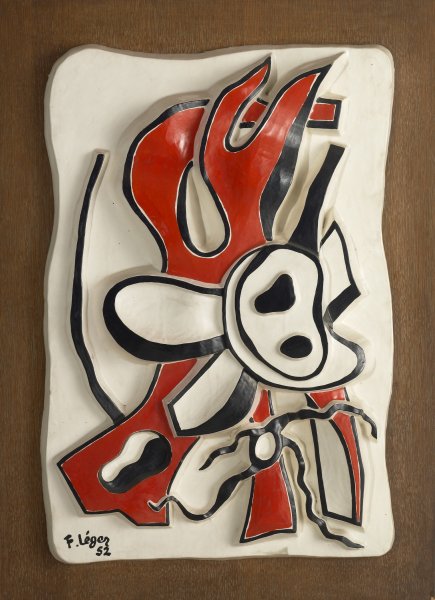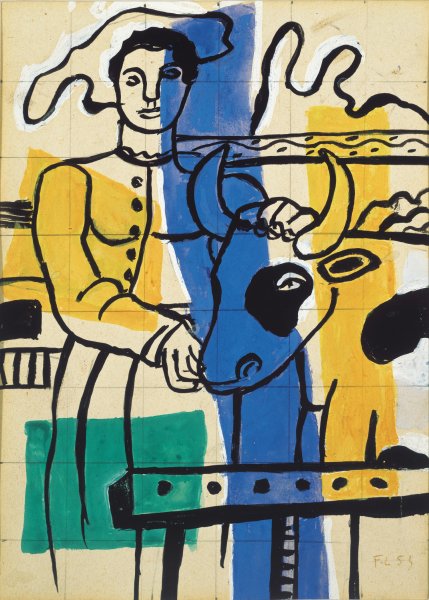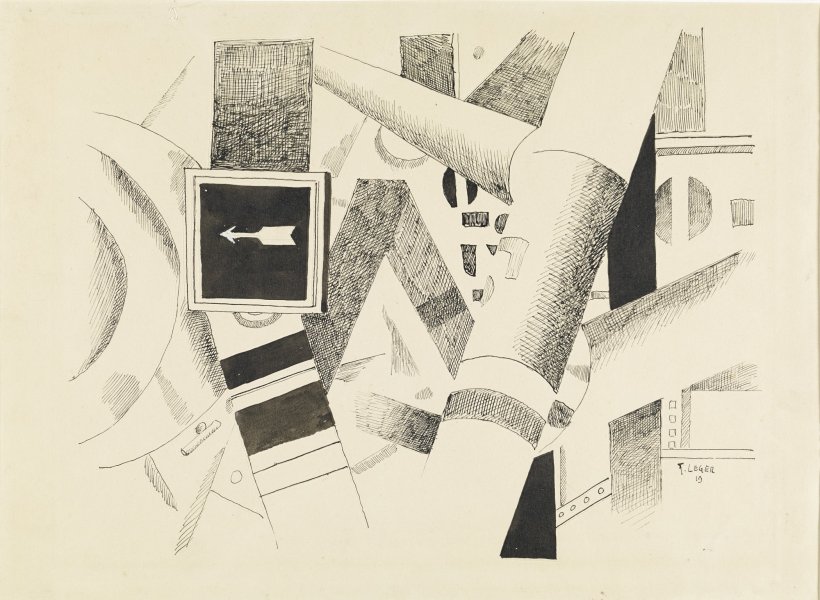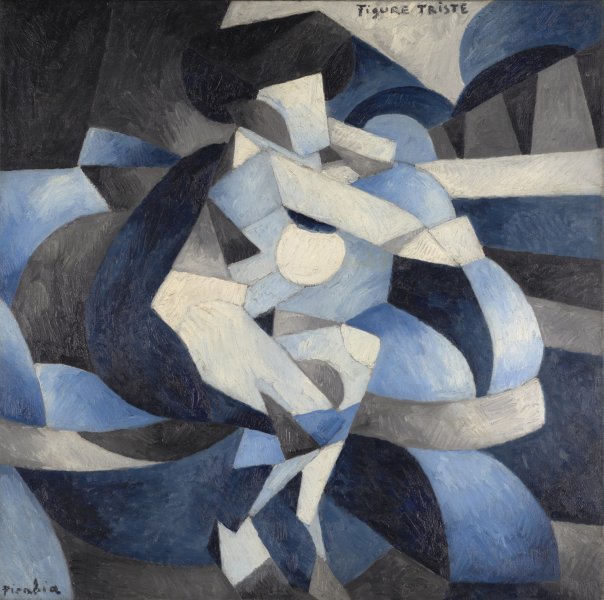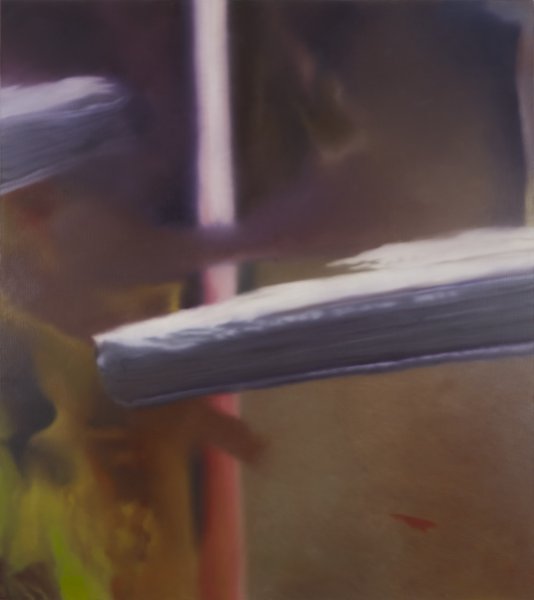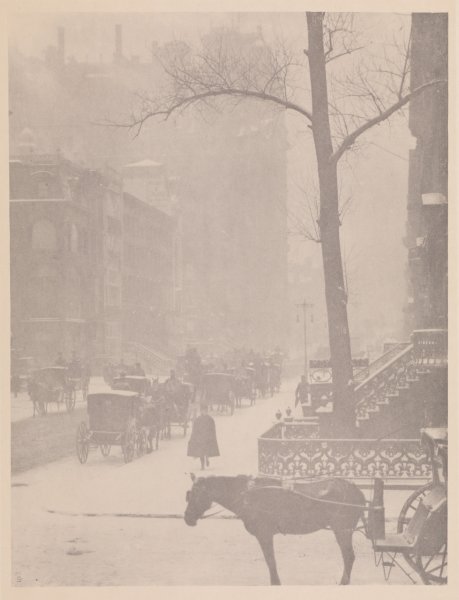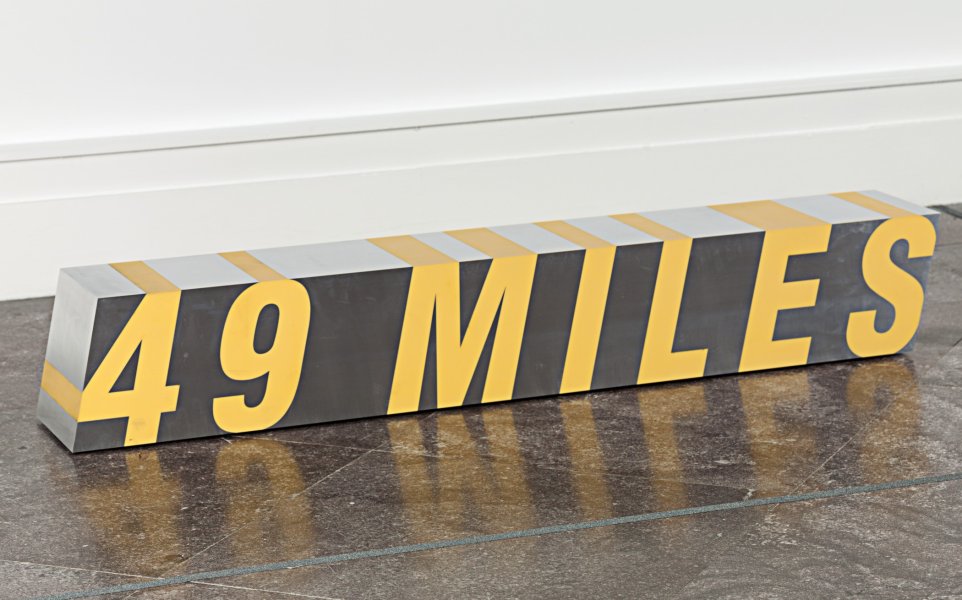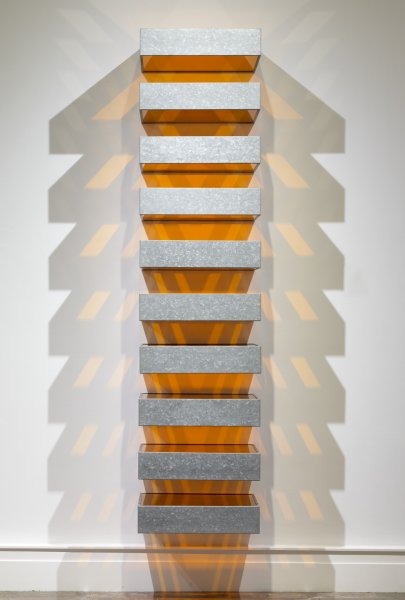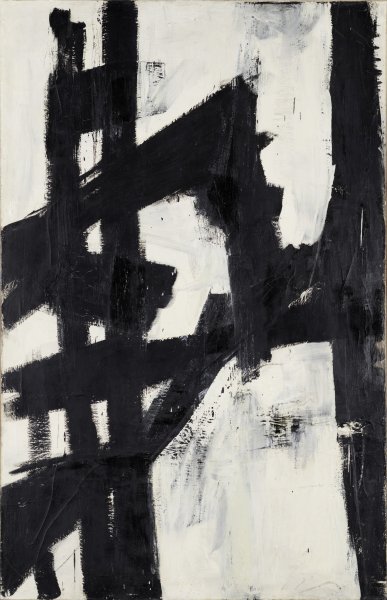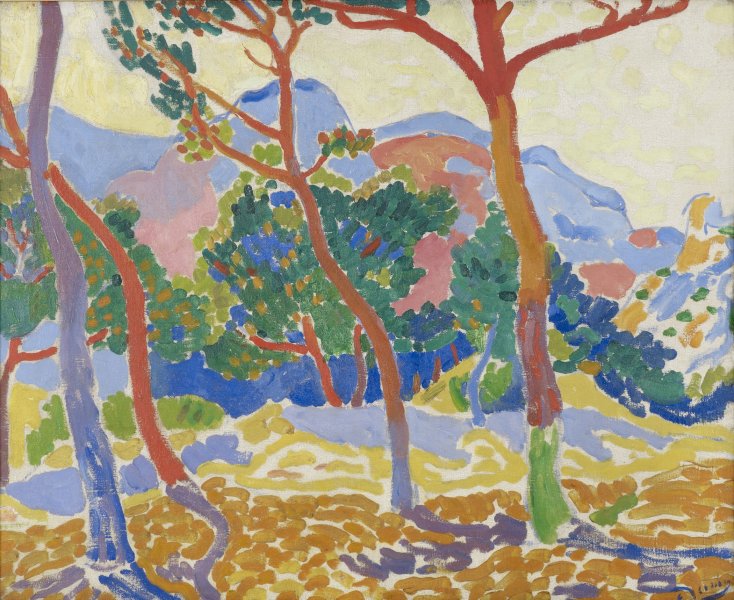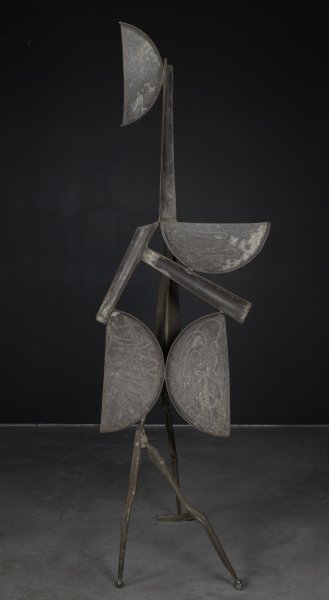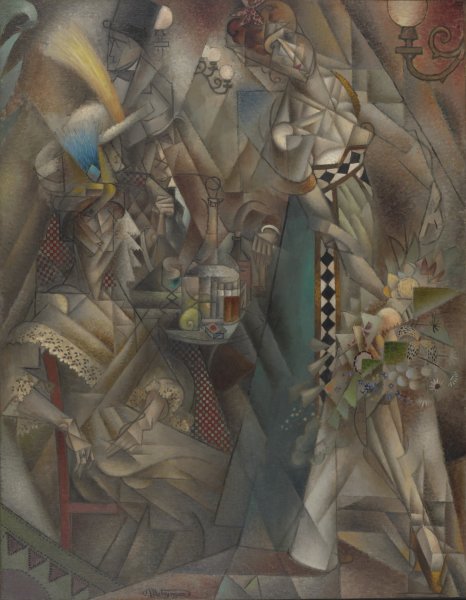Fernand Léger
French, 1881-1955
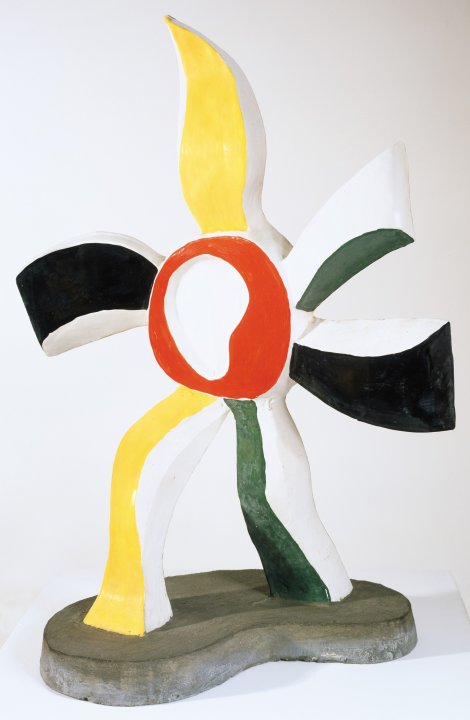
Fernand Léger (French, 1881–1955). La Fleur qui marche (The Walking Flower), 1951. Ceramic, 26 1/2 x 20 1/2 x 15 inches (67.3 x 52.1 x 38.1 cm). Collection Albright-Knox Art Gallery, Buffalo, New York; Gift of Seymour H. Knox, Jr., 1969 (K1969:20). © Estate of Fernand Léger / Artists Rights Society (ARS), New York / ADAGP, Paris / DACS, London
La Fleur qui marche (The Walking Flower), 1951
Artwork Details
Materials
ceramic
Measurements
overall: 26 1/2 x 20 1/2 x 15 inches (67.31 x 52.07 x 38.1 cm)
Collection Buffalo AKG Art Museum
Credit
Gift of Seymour H. Knox, Jr., 1969
Accession ID
K1969:20
Following World War II, Fernand Léger returned to France and began a series of monumental art projects, including mosaics, stained glass, and murals. The Walking Flower, which is one of only a few small freestanding sculptures Léger made during this time, appears with slight modifications in a larger public monument. This cheerful-looking flower seems to be walking toward us on two of its six petals, provoking debate as to which of the other four petals might be the arms and head. It is a refreshing take on an age-old motif. The front is painted with five glazes—yellow, red-orange, green, black, and off-white—but the similar pattern on the back is reduced to black and off-white only. Léger developed the animated flower as a subject in his paintings during the 1930s, and flowers continued to be a favorite subject through the 1950s. For him, the forms found in nature were a refreshing remedy to the pressures of an increasingly fast-paced and industrialized world.
Label from For the Love of Things: Still Life, February 27–May 29, 2016
